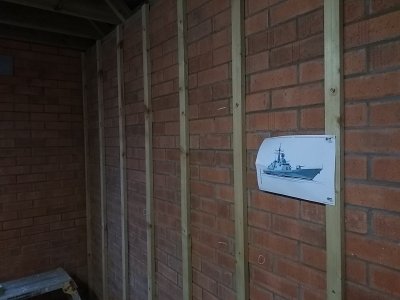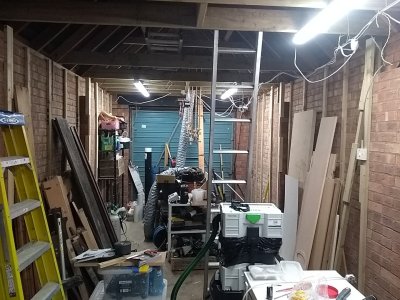Mini Me
Member
I have no idea of what the adhesive was but I assume it was Liquid Nails or similar.
Nice to know RST...I've always been a fan of PL 400 and while Liquid Nails was not specifically identified as eventually turning into "powdery mildew", that adhesive will now be permanently eliminated from any of my purchasing considerations as it always has been...Liquid Nails...nice name...Really?From a commercial glaziers point of view, use a urethane caulk/adhesive. I've done tear outs where the masonry actually came off with the aluminum framing. Wood will often tear out rather than release. As a general rule we need to cut the caulk with a revip or oscillating tool to remove the unit and then chisel the caulk off the masonry with a sharp chisel, preferably chuck in a rotary/chiseling tool to remove. It's so good that now your vehicle windshield is considered a structural part and the reason our company quit doing replacements in the 90s. as it became too specialized. we only do large construction type replacements as they are generally flat and we can cut the glass, on site if need be.
.
I am pretty sure the fit out was at least 30 years old when we stripped the room back to the bricks. I agree it sticks very well for a long time but eventually it breaks down.I use the Liquid Nails style construction adhesives very extensively in conjunction with nails or screws, but generally when I want something to really stay put, and have never had an issue as a result. When I've had to disassemble something the bond is extremely hard or nigh impossible to cleanly break, which is exactly what I want.
Yeah, but nobody is driving nails into masonry. That is why it says concrete, sand-lime brick and steel.@bobtskutter
The DX460 will drive nails into steel girders, mate - seriously. Beast of a machine. I’ve used it frequently for exactly the task you describe. Three nails per batten - and you’ll be able to anchor your battleship to them.
Is that that make-believe insulation with the fake stated R values that in the small letter print assume you include a perfectly closed 50mm closed cavity on either side?
Wait what? He already is planning that, I assumed?Curious: Wouldn’t it be easier to insulate the interior of the garage?


Interesting approach! Using a .22 caliber for fastening does sound fast and effective, especially if the walls are made of blocks that are easy to puncture. But, as you noted, concrete floors are a completely different story, they need more powerful means or a completely different method.I attached studs to interior walls (cinder block) using .22 caliber explosive drive. The cheaper versions are well within reach. But note, I have not tried to shoot into brick.
Curious: Wouldn’t it be easier to insulate the interior of the garage? Foam panels have a higher insulation value and can install with construction adhesive.
I see single shot guns under $40.00 US$. Faster than drilling and less work too.
But note: These come in various loads depending upon the surface being attached to. And while the cinderblock walls accepted the nails with a light load, even the heaviest loads could not penetrate the poured concrete floors.
Curious: Wouldn’t it be easier to insulate the interior of the garage? Foam panels have a higher insulation value and can install with construction adhesive. Plus, when working on interiors, consider adding some biophilic wallpaper to bring a touch of nature indoors — it not only enhances aesthetics but also creates a calming environment, which is great if you spend time working in the garage or adjacent spaces.
